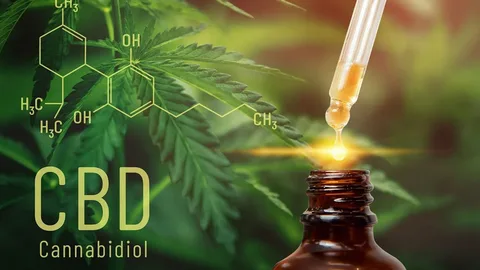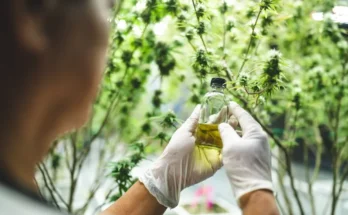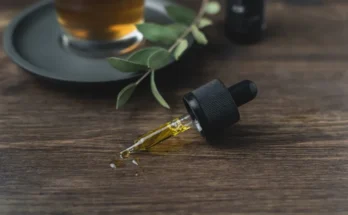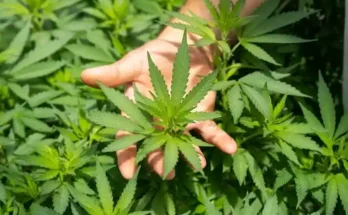Amid the relentless noise of modern life—endless pings, crowded cities, long workdays, and mental burnout—a quiet hero is emerging from nature. It doesn’t promise a quick fix or magical transformation, but for many, it offers something much more meaningful: calm. This is the rise of CBD, short for Cannabidiol, a compound that’s been around for centuries but is now captivating modern wellness seekers around the globe.
CBD is not a trend—it’s a movement. It’s redefining how we look at health, balance, and healing. But what exactly is CBD, why is it everywhere, and what’s the story behind its surge in popularity?
Let’s dive into the full picture of CBD: the science, the stigma, the benefits, and the deeply personal stories that make it more than just another wellness product.
What is CBD, Really?
CBD is one of over 100 naturally occurring compounds found in the Cannabis sativa plant. Unlike its cousin THC (Tetrahydrocannabinol), CBD is non-psychoactive—meaning it won’t make you feel “high.” What it may do, however, is interact with your body’s endocannabinoid system (ECS), a network responsible for maintaining balance in sleep, mood, appetite, and more.
While cannabis has long been associated with recreational use and taboo, CBD is helping shift that narrative. It’s the plant’s whisper rather than its roar, working subtly to restore what life often throws off course.
From Ancient Use to Modern Fame:
CBD isn’t new. Ancient texts from China and India reference cannabis-derived remedies used to ease pain, inflammation, and anxiety. But over time, due to shifting political winds and social stigma, cannabis in all its forms fell into legal and cultural disfavor, especially in the 20th century.
That’s changing. With the 2018 Farm Bill in the United States legalizing hemp-derived CBD at the federal level, a door was opened. Suddenly, the market was flooded with CBD oils, creams, edibles, and even CBD-infused drinks—each claiming to bring balance back to body and mind. Science began catching up with centuries of anecdotal use, and consumers were ready to listen.
How CBD Works in the Body?
The Endocannabinoid System
The human body has an internal system—called the endocannabinoid system (ECS)—that helps regulate vital functions like mood, pain, immune response, and sleep. CBD interacts with receptors in this system, particularly CB1 and CB2, although in a more indirect way than THC.
This interaction is what’s believed to give CBD its calming, anti-inflammatory, and analgesic effects. It doesn’t override your body’s natural systems—it works with them, enhancing balance where imbalance exists.
The Research
Clinical research on CBD is still growing, but results so far are promising. The FDA has approved Epidiolex, a CBD-based medication for rare forms of epilepsy. Early studies also suggest potential benefits in managing anxiety, chronic pain, insomnia, and even some inflammatory conditions.
But science is cautious. The CBD space is still maturing, and more robust, long-term studies are needed to fully understand how it works, for whom it works best, and in what dosages.
The Many Faces of CBD:
CBD for Anxiety and Mental Wellness
One of CBD’s most widely claimed benefits is its ability to reduce anxiety and promote mental clarity. Many users describe a sense of calm without sedation, focus without tension. In a world filled with stressors—from job pressures to information overload—CBD offers a natural buffer.
It doesn’t numb or mask emotions but may help regulate the waves of overwhelm, making space for stillness and breath.
CBD in Skincare and Beauty
CBD’s anti-inflammatory and antioxidant properties make it a rising star in skincare. Brands are now formulating creams, serums, and masks with CBD to help reduce acne, calm irritated skin, and combat signs of aging.
Here, CBD becomes not just a health supplement but a self-care ritual—one that ties outer beauty to inner wellness.
CBD for Pain and Recovery
Athletes and everyday individuals alike are turning to CBD to manage pain and post-workout recovery. Whether it’s joint inflammation, sore muscles, or chronic back pain, CBD’s potential to soothe without the side effects of NSAIDs or opioids is what sets it apart.
In this realm, CBD is not a cure, but a companion to healing—gentle, consistent, and adaptable.
Myths and Legal Realities:
CBD vs. THC
The biggest misconception is that CBD will get you high. It won’t. While both CBD and THC come from the cannabis plant, their effects on the brain are vastly different. CBD is non-intoxicating, and when sourced from hemp (which contains less than 0.3% THC), it’s legal in many parts of the world.
Yet, because of lingering stigma and inconsistent regulations, consumers must be savvy. Not all CBD products are created equal, and lab testing for purity and potency is crucial when choosing trustworthy brands.
Navigating Legal Grey Zones
CBD’s legal status varies by country—and even by state or province. In some areas, it’s available over the counter; in others, only via prescription. Understanding local laws is essential, especially when traveling or selling CBD products.
The regulatory world is catching up with the science and demand, but we’re not quite there yet.
CBD Stories:
Talk to someone who uses CBD, and you’ll rarely hear buzzwords. Instead, you’ll listen to stories of relief from chronic migraines, better sleep after months of insomnia, fewer panic attacks, or even being able to get out of bed after fibromyalgia flares.
These stories aren’t clinical trials, but they are authentic. They’re reminders that healing isn’t always loud—sometimes, it’s found in a few quiet drops of oil under the tongue, in the calm before sleep, in the easing of breath.
The Future of CBD:
As research deepens and technology advances, we’re likely to see personalized CBD products tailored to specific health goals, body chemistry, and even genetic profiles. Think DNA-based CBD recommendations, or CBD blends crafted for morning focus versus evening calm.
CBD’s future is not just in oils and edibles. It’s in wellness retreats, CBD-enhanced yoga sessions, virtual therapy integrations, and maybe even smart wearables that sync with your endocannabinoid levels.
As the wellness industry evolves, CBD is poised to stay, not as a miracle cure, but as a trusted companion in our journey toward balance and better living.
Conclusion:
CBD is not a fad. It’s a return. A return to nature, to gentler remedies, and to listening to what our bodies truly need. In the chaos of modern life, it offers a moment of pause, a breath of stillness, and a path toward more mindful healing.
Whether you’re a curious beginner or a seasoned user, the world of CBD is rich, evolving, and—most importantly—rooted in real stories of change, relief, and resilience.




